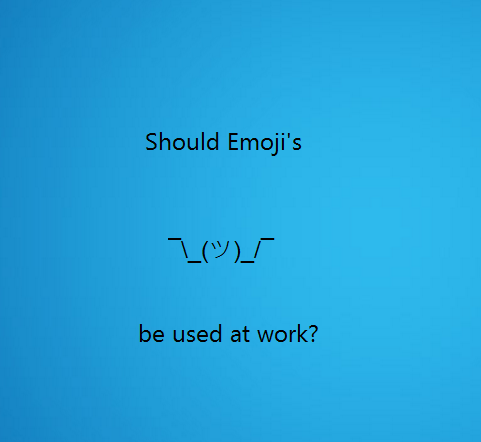
According to Dr. Sian Towson, it really depends on who you ask. Employees who are older than 35 years show the need for the use of emoticons, such as the simple smiley face, but not emojis, which consist of several characters. Millennials, however, show their emotions and tend to express themselves more through emojis. That means that more use is made of these types of communications in the workplace, because the number of Millennials is growing.
Emoticons seem absolutely necessary to show that a sarcastic remark is not intended to provide a strong message, and to let some milder sound, without having to tone down words. This means they are being used by everyone from software developers to auditors. Communication using them means more clarification in the meaning behind words, making people more sympathetic and more approachable, so Towson notes in its surroundings.
Hierarchy
Many employees primarily use emoticons when they communicate with colleagues 'of the same level.' In communication with a manager or director, they are used much more sparingly, if at all. According to Dr. Joseph Barber, director of the career center at the University of Pennsylvania, this is logical. “You dress for the job you want. If you want to become a manager, you clothe yourself generally formal. The same applies to the way you communicate. Invite your colleagues to lunch, then emojis are useful again. We're going to flip ties with others, with the same language and to exhibit the same behaviour.”
Dr. Barber does emphasise the importance of face-to-face contact, especially when difficult messages are conveyed.
Avoid misunderstanding
Coach Nicole Ponsford encourages students and pupils to use emojis. "Misunderstandings in language can lead to bullying and cyberbullying. To prevent this, you should make sure that a message can not be misinterpreted. To this end, emoticons and emojis are indispensable."
It is expected that the use of symbols in work-related communication will increase significantly over the coming years. For now, however, there is mainly anecdotal evidence supporting this claim.
